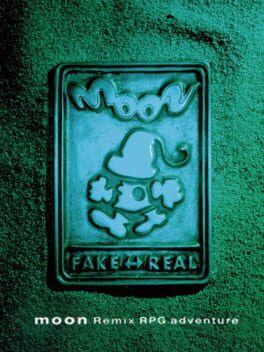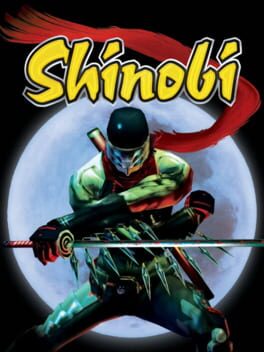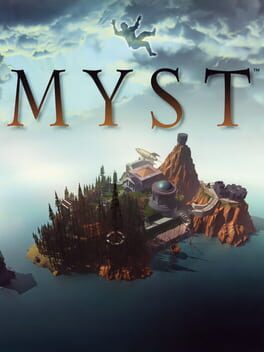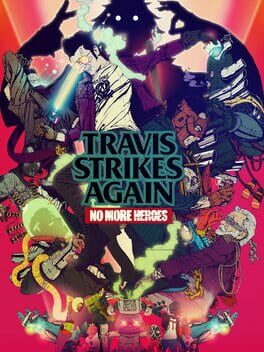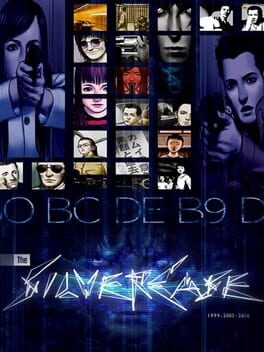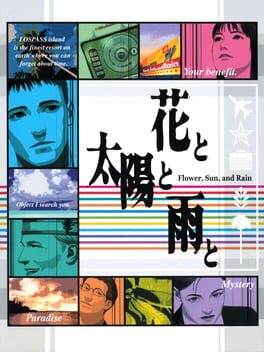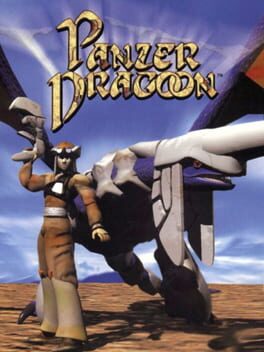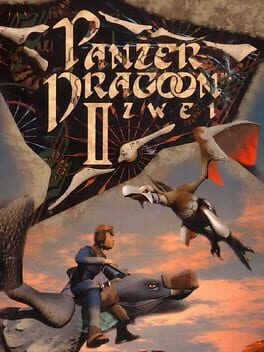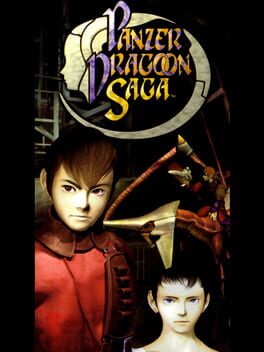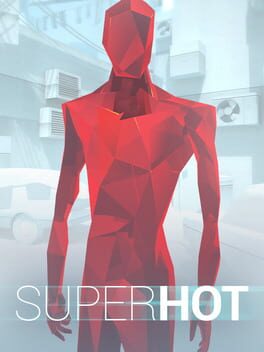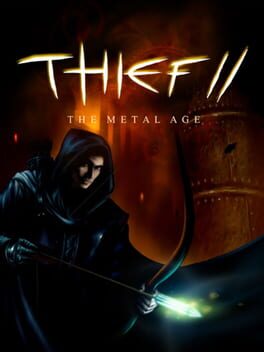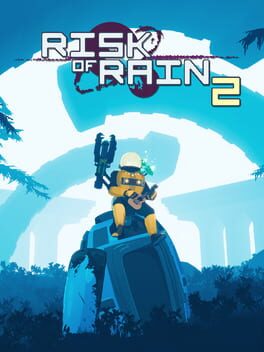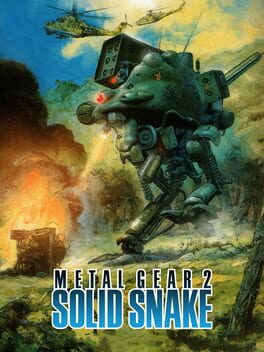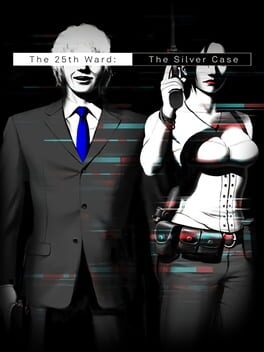Hattori
It's not hard to see why many would compare Moon to the Mother games, a series of titles that has been poking fun at the tropes and conventions of JRPGs, and videogames in general, starting at 1989, through the use of cute westernized cartoony aesthetics.
However, Moon stands out from those games by how far it goes along with its premise, making use of a subversive and unique game concept and design. By looking at the landscape of videogames in Japan at the time of it's release through the lens of a western adventure game, Moon examines what games are, how we play and perceive them, and what they could be.
3 years ahead of Majora's Mask, Moon presents a world with characters that exist beyond your presence and interference, and that asks you to to simply take a moment, look around, and take note of what you can see. What you will see from it will depend on how much you are willing to give to it, and it's an uncompromising experience that demonstrates the power of videogames, without having to pander to the basic instincts and urges from it's players.
All done through quirky and charming characters, creative and off the wall puzzles, an ecclectic and diverse soundtrack and inventive game design.
Playing Moon, the similarities with Undertale are obvious, and its clear where Toby Fox got a lot of his inspiraton from. And just like Undertale, Moon revels in the use of some of the best meta narrative ideas and conepts the medium has to offer.
But its important to note that Moon did it first. And arguably did it better.
However, Moon stands out from those games by how far it goes along with its premise, making use of a subversive and unique game concept and design. By looking at the landscape of videogames in Japan at the time of it's release through the lens of a western adventure game, Moon examines what games are, how we play and perceive them, and what they could be.
3 years ahead of Majora's Mask, Moon presents a world with characters that exist beyond your presence and interference, and that asks you to to simply take a moment, look around, and take note of what you can see. What you will see from it will depend on how much you are willing to give to it, and it's an uncompromising experience that demonstrates the power of videogames, without having to pander to the basic instincts and urges from it's players.
All done through quirky and charming characters, creative and off the wall puzzles, an ecclectic and diverse soundtrack and inventive game design.
Playing Moon, the similarities with Undertale are obvious, and its clear where Toby Fox got a lot of his inspiraton from. And just like Undertale, Moon revels in the use of some of the best meta narrative ideas and conepts the medium has to offer.
But its important to note that Moon did it first. And arguably did it better.
2002
If you would have played this game without any context of its predecessors or the knowledge of its name title, you probably would never associate Shinobi for the PS2 with the classic Shinobi series of the 90s. Looks can however be deceiving, as this entry is extremely similar to those older games, both in aesthetics and gameplay philosophy.
Shinobi is a very arcade-y and fast paced game thats centered on its main combat mechanic: the more enemies you kill in a short time frame, the more damage you do to subsequent ones. Despite there only being one main attack button, a button for throwing shurikens that stun enemies and a dodge button, this timed gimmick manages to carry the whole game all the way through the end, going as far as letting you literally one hit kill every single boss in the game if you play your cards right.
The developer team was smart in stripping away any fat from the game, like complex combos or any needless moves that would only distract you from the main conceit of the game, which is getting through the stages as fast as possible. With this speed and precision focused combat system, its selection of oriental flavored environments mixed with industrial and sci fi thematic locations, and a dash of ninja style by letting you run on wall, this entry in the series feels right at home with the 2D predecessors, despite what its deceiving exterior might look like.
It falls a bit short from achieving greatness due to some lackluster and dull enemies, a frustrating camera, a couple of mediocre levels, a terribly uninteresting story and some infuriating bosses, but if you are looking to scratch that action game itch, then Shinobi is a hidden gem waiting to be mastered, with a very appetizing runtime of around 5 hours, allowing for multiple replays.
Plus, you have to admit that the scarf is badass.
Shinobi is a very arcade-y and fast paced game thats centered on its main combat mechanic: the more enemies you kill in a short time frame, the more damage you do to subsequent ones. Despite there only being one main attack button, a button for throwing shurikens that stun enemies and a dodge button, this timed gimmick manages to carry the whole game all the way through the end, going as far as letting you literally one hit kill every single boss in the game if you play your cards right.
The developer team was smart in stripping away any fat from the game, like complex combos or any needless moves that would only distract you from the main conceit of the game, which is getting through the stages as fast as possible. With this speed and precision focused combat system, its selection of oriental flavored environments mixed with industrial and sci fi thematic locations, and a dash of ninja style by letting you run on wall, this entry in the series feels right at home with the 2D predecessors, despite what its deceiving exterior might look like.
It falls a bit short from achieving greatness due to some lackluster and dull enemies, a frustrating camera, a couple of mediocre levels, a terribly uninteresting story and some infuriating bosses, but if you are looking to scratch that action game itch, then Shinobi is a hidden gem waiting to be mastered, with a very appetizing runtime of around 5 hours, allowing for multiple replays.
Plus, you have to admit that the scarf is badass.
1993
Booting up Myst 27 years later after it's release, it's still impressive how much mystique and allure it has.
It's age immediately shows, but once you get past it's early cd-rom origins, you will find yourself in its now emblematic otherwordly, alien and mysterious island.
The static nature of its gameplay, combined with the lack of living beings on the island ( besides the presence of live action clips of the previous inhabitants and their belongings and writing) and sparse ambient soundscape creates a very unique and zen like atmosphere that's hardly replicated on other games of it's genre, something that probably helped it standout so much at the time. The obtuse and illogical mechanisms, buttons and contraptions scattered across the world of Myst invite the player like a moth to fire, speaking to a inner part of human nature that wants to solve and make sense of things.
The brilliance of it's design is in how it has every solution and path available to you from the start, you just dont have the information and clues required to know that those solutions and paths are already in front of you. In a stroke of genius, the game even has the final solution in plain sight at the start of the game. Some of the puzzles are duds, and some of the puzzles are a bit too obtuse to be taken seriously. The story is barebones, and only there to serve as some form of goal. There is sometimes the sense that you are playing a tech demo for the almight CD-ROM.
But Myst is still a classic, and if you never have, you should visit it's island and see for yourself the power of human curiosity and stubborness, and how that alone is enough to create a world worth falling into.
It's age immediately shows, but once you get past it's early cd-rom origins, you will find yourself in its now emblematic otherwordly, alien and mysterious island.
The static nature of its gameplay, combined with the lack of living beings on the island ( besides the presence of live action clips of the previous inhabitants and their belongings and writing) and sparse ambient soundscape creates a very unique and zen like atmosphere that's hardly replicated on other games of it's genre, something that probably helped it standout so much at the time. The obtuse and illogical mechanisms, buttons and contraptions scattered across the world of Myst invite the player like a moth to fire, speaking to a inner part of human nature that wants to solve and make sense of things.
The brilliance of it's design is in how it has every solution and path available to you from the start, you just dont have the information and clues required to know that those solutions and paths are already in front of you. In a stroke of genius, the game even has the final solution in plain sight at the start of the game. Some of the puzzles are duds, and some of the puzzles are a bit too obtuse to be taken seriously. The story is barebones, and only there to serve as some form of goal. There is sometimes the sense that you are playing a tech demo for the almight CD-ROM.
But Myst is still a classic, and if you never have, you should visit it's island and see for yourself the power of human curiosity and stubborness, and how that alone is enough to create a world worth falling into.
For anyone who follows Suda 51, it's obvious that he puts much of himself and his life experiences into his own work. His games are filled with paralels to himself, his thoughts, ideas, opinions, and everything else inbetween, creating a very distinct series of games that are not only intertwined by a common theme (The past) but also by Suda.
Travis Strikes Again is the most blatant example of this dynamic, putting Suda directly into the shoes of Travis Touchdown, a once rising star in the world of assassins, now a washed up and reclusive hermit jaded by his previous existence.
TSA is steeped in love for the primitive and wild west origins of videogames that Suda was lucky to be a part of, recontextualized through the modern indie scene that revitalized not only the uncharted territory of the videogame creation process, but Suda himself.
TSA is a myriad of references, introspections, observations and jabs at Suda's past work and his participation in the creation of those, constructing a surprisingly heartfelt and personal redemption arc for both Travis Touchdown and Suda.
To accomplish this feat, TSA is presented as a indie looking top view hack n' slash beat em up reminiscent of old school arcade titles, where Travis goes inside a videogame console to fight through stages and bosses of videogames he played at an early age and that made him the man he is now, this too interconnected with Suda's past.
The gameplay itself isnt anything worthy of writing home about, it gives you just enough to be entertained all the way through its length and provides a nice challenge to overcome. Of all the Suda action oriented games, it's probably the least interesting one gameplay-wise, functioning more so as an intersection between the the narrative meat of the game.
But if you have played Suda games before, you know that the gameplay is never the main focus of the experience, but a vehicle for something greater than the sum of its parts. And to be able to fully appreciate this title, you have to be already invested in the Suda 51 canon. Otherwise, this game might not speak much to you, understandably so.
A fantastic transitional step for Suda, and im looking forward for what's next to come.
Travis Strikes Again is the most blatant example of this dynamic, putting Suda directly into the shoes of Travis Touchdown, a once rising star in the world of assassins, now a washed up and reclusive hermit jaded by his previous existence.
TSA is steeped in love for the primitive and wild west origins of videogames that Suda was lucky to be a part of, recontextualized through the modern indie scene that revitalized not only the uncharted territory of the videogame creation process, but Suda himself.
TSA is a myriad of references, introspections, observations and jabs at Suda's past work and his participation in the creation of those, constructing a surprisingly heartfelt and personal redemption arc for both Travis Touchdown and Suda.
To accomplish this feat, TSA is presented as a indie looking top view hack n' slash beat em up reminiscent of old school arcade titles, where Travis goes inside a videogame console to fight through stages and bosses of videogames he played at an early age and that made him the man he is now, this too interconnected with Suda's past.
The gameplay itself isnt anything worthy of writing home about, it gives you just enough to be entertained all the way through its length and provides a nice challenge to overcome. Of all the Suda action oriented games, it's probably the least interesting one gameplay-wise, functioning more so as an intersection between the the narrative meat of the game.
But if you have played Suda games before, you know that the gameplay is never the main focus of the experience, but a vehicle for something greater than the sum of its parts. And to be able to fully appreciate this title, you have to be already invested in the Suda 51 canon. Otherwise, this game might not speak much to you, understandably so.
A fantastic transitional step for Suda, and im looking forward for what's next to come.
1995
In the pantheon of what people consider "perfect games", it's not gonna be hard finding Chrono Trigger being name-dropped.
Playing it all these years later, it's understandable to see why it has such a highly regarded reputation. Chrono Trigger moves along at a brisk and well thought out pace, establishing its world, tone, and characters in a few short and memorable scenes, right before sending you off on a time travel adventure to save the planet from ultimate annihilation with your best friend and a damsel in distress.
This is Chrono Trigger's biggest strength: the ability to not waste your time, presenting a compelling and fun diverse cast of personalities and enough intrigue and pathos to propel you on your quest. This is accomplished by the expertise of Square Enix's "Dream Team", a group of talented devs that included Sakaguchi (titan of the JRPG genre, famed for creating Final Fantasy), Toriyama (the man behind the iconic character design of Dragon Quest) and Uematsu (legend composer of the Final Fantasy series), along with other just as important members, who gave Chrono Trigger its classic art style and design, charming and witty dialogue and characters, a memorable and haunting soundtrack, and engaging combat system.
Beyond the bond and interplay between the main characters that happen during the cutscenes, the combat itself also reinforces that narrative, with its focus on cooperative techniques that have the team members joining together to deal more powerful attacks to the enemies. Added to that, the combat isn't as abstracted as other JRPGs like Final Fantasy, where the characters and enemies just stand in direct opposition to each other, statically waiting for their turn.
In Chrono Trigger you can see the enemies walking around in the field before encounters, and during combat they move around and are affected by their position in relation to your team members, creating a much more dynamic and expressive burst of action.
Chrono Trigger doesn't' necessarily push the boundaries of its main core components. The story is enjoyable all the way through, but it's not the greatest literature ever put on a cartridge, and the gameplay is satisfying enough but it's not gonna break the mold of JRPGs anytime soon. It's however the marriage between all its pieces that produce a blockbuster of 16-bit glory.
It's hard not feel some form of fascination and excitement during moments like when you are showing Marlie around the town fair, when you find yourself transported to the future and witness the world destroyed, when you fight Magus in his dark castle, when you find the lost magic kingdom that's suspended in the air, or when you save a team member who sacrifices himself to save the rest of the group from certain death.
As you find yourself at the end, having gone through space and time fighting a gauntlet of enemies and boss battles, and defeating a challenging and multiple phased final boss, it's difficult not to look back at the game and not be impressed by it's perfected simplicity.
Regarding which version to be played, the SNES is the right decision. The DS version, while more faithful, does a disservice to the characters by making the line delivery more stoic and stilted, and the game is intended to be played on a big screen, not on such a small device where the pixel magic will be lost.
Certified classic.
Playing it all these years later, it's understandable to see why it has such a highly regarded reputation. Chrono Trigger moves along at a brisk and well thought out pace, establishing its world, tone, and characters in a few short and memorable scenes, right before sending you off on a time travel adventure to save the planet from ultimate annihilation with your best friend and a damsel in distress.
This is Chrono Trigger's biggest strength: the ability to not waste your time, presenting a compelling and fun diverse cast of personalities and enough intrigue and pathos to propel you on your quest. This is accomplished by the expertise of Square Enix's "Dream Team", a group of talented devs that included Sakaguchi (titan of the JRPG genre, famed for creating Final Fantasy), Toriyama (the man behind the iconic character design of Dragon Quest) and Uematsu (legend composer of the Final Fantasy series), along with other just as important members, who gave Chrono Trigger its classic art style and design, charming and witty dialogue and characters, a memorable and haunting soundtrack, and engaging combat system.
Beyond the bond and interplay between the main characters that happen during the cutscenes, the combat itself also reinforces that narrative, with its focus on cooperative techniques that have the team members joining together to deal more powerful attacks to the enemies. Added to that, the combat isn't as abstracted as other JRPGs like Final Fantasy, where the characters and enemies just stand in direct opposition to each other, statically waiting for their turn.
In Chrono Trigger you can see the enemies walking around in the field before encounters, and during combat they move around and are affected by their position in relation to your team members, creating a much more dynamic and expressive burst of action.
Chrono Trigger doesn't' necessarily push the boundaries of its main core components. The story is enjoyable all the way through, but it's not the greatest literature ever put on a cartridge, and the gameplay is satisfying enough but it's not gonna break the mold of JRPGs anytime soon. It's however the marriage between all its pieces that produce a blockbuster of 16-bit glory.
It's hard not feel some form of fascination and excitement during moments like when you are showing Marlie around the town fair, when you find yourself transported to the future and witness the world destroyed, when you fight Magus in his dark castle, when you find the lost magic kingdom that's suspended in the air, or when you save a team member who sacrifices himself to save the rest of the group from certain death.
As you find yourself at the end, having gone through space and time fighting a gauntlet of enemies and boss battles, and defeating a challenging and multiple phased final boss, it's difficult not to look back at the game and not be impressed by it's perfected simplicity.
Regarding which version to be played, the SNES is the right decision. The DS version, while more faithful, does a disservice to the characters by making the line delivery more stoic and stilted, and the game is intended to be played on a big screen, not on such a small device where the pixel magic will be lost.
Certified classic.
2016
Playing through The Silver Case with only the knowledge that it is a Visual Novel and one of Suda's early works, one doesnt expect to find MGS2 conceived years before the MGS2 we actually know today. It's hard to adjust to The Silver Case if you never have played Visual Novels before. You will spend hours reading lines of text and dialogue, occasionally moving around a bit to find the next set of text and dialogue, watching static portraits of the characters with the rare still showing you what is indeed happening, and a puzzle once in a blue moon to solve, all while you repeatedly mash the spacebar to move the story along.
Playing TSC, questions of what constitutes a videogame and if VNs can even fit that role inevitably arise, and sometimes the lack of interactivity or choice makes one wonder why you arent simply just reading a book. But like Kojima, Suda understands that when the player controls a character in an interactive medium, a symbiotic relationship is created between both, constantly shifting from one to the other and to what's inbetween, and he takes advantage of that knowledge to play with complex postmodern ideas of identity, your place in the world, the search for truth, the age of information, purpose, freedom of choice, and so much more.
Suda's writting style is wholly unique, something fans of Killer7 and NMH can testify to, filling TSC with a lot of dense questions and mysteries delivered in very obtuse and uncoventional ways, most of which you will never find the answers to, and a vast and diverse cast of characters with their own quirks and weirdness, and seemingly incomplete and questionable arcs. And he delivers these with just enough interactive input from the player, while at the same examining said player's role and what that implies, that by the end of the game, the existence of TSC as a videogame is totally justified. What starts as a cynical and edgy conspiracy about an elusive worshiped mass murderer, slowly leads into a surreal abstract canvas where the existence of a main villain is no longer as certain as it was at the beginning, becoming instead a heartfelt and empathetic mirror held to the videogame players of the modern age. A game truly ahead of it's time.
Playing TSC, questions of what constitutes a videogame and if VNs can even fit that role inevitably arise, and sometimes the lack of interactivity or choice makes one wonder why you arent simply just reading a book. But like Kojima, Suda understands that when the player controls a character in an interactive medium, a symbiotic relationship is created between both, constantly shifting from one to the other and to what's inbetween, and he takes advantage of that knowledge to play with complex postmodern ideas of identity, your place in the world, the search for truth, the age of information, purpose, freedom of choice, and so much more.
Suda's writting style is wholly unique, something fans of Killer7 and NMH can testify to, filling TSC with a lot of dense questions and mysteries delivered in very obtuse and uncoventional ways, most of which you will never find the answers to, and a vast and diverse cast of characters with their own quirks and weirdness, and seemingly incomplete and questionable arcs. And he delivers these with just enough interactive input from the player, while at the same examining said player's role and what that implies, that by the end of the game, the existence of TSC as a videogame is totally justified. What starts as a cynical and edgy conspiracy about an elusive worshiped mass murderer, slowly leads into a surreal abstract canvas where the existence of a main villain is no longer as certain as it was at the beginning, becoming instead a heartfelt and empathetic mirror held to the videogame players of the modern age. A game truly ahead of it's time.
In FSR, you are Sumio, a sort of detective who has been requested to come to a resort island, and your mission is to prevent a plane from exploding by stopping the terrorists and the bomb they have planted at the airport.Except that isn't what you do at all in the game.
For most of the game you will spend your time going up and down the stairs of the hotel you are checked in, walking ridiculous amounts of distance on foot, doing weird and unrelated favors to oddball islanders and solving obtuse and inconsequential math puzzles, literally repeating itself each day, as you, of course, find yourself stuck in a Groundhog Day type time loop. At every turn and opportunity it gets, FSR will prevent you from doing your job by putting roadblocks on your path with the sole purpose of distracting you, annoy you and discourage you. And it's great.
Many would , rightfully so, compare FSR with Twin Peaks, it being a game filled with quirky and strange characters that speak in unnatural and uncoventional ways, and surrealist moments that suddenly clash with the mundane and grounded tone of the island. But a more direct influence, and obvious inspiration for Suda, stands out to me, and that is Franz Kafka.
FSR is the videogame equivalent of a Kafkaesque tale. A game that utilizes it's interactive component to put you in the shoes of the protagonist so you can feel his frustration and confusion as he tries to navigate a world he doesnt understand and reach a goal that gets progressively more unobtainable, with the island and its inhabitants constantly detouring you somewhere else. At many points during the experience the game itself will mock you, calling attention to it's meaningless puzzles, gameplay loop, or even the graphics. The fantasy of being on a vacation in a tropical island is slowly distorted by the premise of having you repeat the same day over and over again, adding already to the redudancy of the core mechanics of the game, and even the act of walking around feels like it's a joke on the player, having you constantly readjusting the controls due to the camera that seems to have a mind of it's own.
The sum of all these uncharacteristically unintuitive design choices for a videogame create a very unique narrative about the idea of being stuck at a crossroads, where the knowledge of the past and the fear of the future constrict the protagonist from moving ahead, and how life's circumstances constantly takes us away from the path we think we want to follow, and it's achieved mainly through just the act of playing the game. Beyond it's ingenious design, FSR is an extremely funny game, and sports a very chill and zen atmosphere, with it's classical music based soundtrack.
Think of it as Link's Awakening for the masochists.
For most of the game you will spend your time going up and down the stairs of the hotel you are checked in, walking ridiculous amounts of distance on foot, doing weird and unrelated favors to oddball islanders and solving obtuse and inconsequential math puzzles, literally repeating itself each day, as you, of course, find yourself stuck in a Groundhog Day type time loop. At every turn and opportunity it gets, FSR will prevent you from doing your job by putting roadblocks on your path with the sole purpose of distracting you, annoy you and discourage you. And it's great.
Many would , rightfully so, compare FSR with Twin Peaks, it being a game filled with quirky and strange characters that speak in unnatural and uncoventional ways, and surrealist moments that suddenly clash with the mundane and grounded tone of the island. But a more direct influence, and obvious inspiration for Suda, stands out to me, and that is Franz Kafka.
FSR is the videogame equivalent of a Kafkaesque tale. A game that utilizes it's interactive component to put you in the shoes of the protagonist so you can feel his frustration and confusion as he tries to navigate a world he doesnt understand and reach a goal that gets progressively more unobtainable, with the island and its inhabitants constantly detouring you somewhere else. At many points during the experience the game itself will mock you, calling attention to it's meaningless puzzles, gameplay loop, or even the graphics. The fantasy of being on a vacation in a tropical island is slowly distorted by the premise of having you repeat the same day over and over again, adding already to the redudancy of the core mechanics of the game, and even the act of walking around feels like it's a joke on the player, having you constantly readjusting the controls due to the camera that seems to have a mind of it's own.
The sum of all these uncharacteristically unintuitive design choices for a videogame create a very unique narrative about the idea of being stuck at a crossroads, where the knowledge of the past and the fear of the future constrict the protagonist from moving ahead, and how life's circumstances constantly takes us away from the path we think we want to follow, and it's achieved mainly through just the act of playing the game. Beyond it's ingenious design, FSR is an extremely funny game, and sports a very chill and zen atmosphere, with it's classical music based soundtrack.
Think of it as Link's Awakening for the masochists.
1995
Panzer Dragoon aims to impress. It's hard not be awed as you start the game and find yourself on top of a dragon flying over the ruins of an ancient Rome looking city scattered across an ocean of pristine blue water while a beautiful orchestral track plays in the background. For a launch title, Panzer Dragoon represented the promise of what the Sega Saturn could accomplish, and how it wouldn't stay behind the likes of the PS1 and the N64 in the leap to the 3rd dimension.
Panzer Dragoon represents an awkward transition period for SEGA, when the arcade experience was rapidly being ditched on the home console market for more contemplative and slow paced videogames that didn't focuse excusively on challenging the players.
Nintendo in that department was already ahead of SEGA, having it's most prestigious selection of games on SNES be works such as FFVI, Chrono Trigger, Super Metroid and Link to the Past, while the SEGA Megadrive/Genesis was still marketing itself to the arcade audience for most of it's lifespan.
And for me that's where the charm lies in Panzer Dragoon. Panzer Dragoon is a rail shooter, following the footsteps of many of it's arcade predecessors, and it doesn't really try to innovate on the shooter genre in any meaningful way. What elevates it above those previous arcade games, is the presentation that covers the core gameplay. Despite the poor 3D capabilities of the Saturn, the dev team managed to squeeze enough juice from it to give Panzer Dragoon it's epic scale aesthetic, having you fly vast landscapes filled with diverse ships and monsters as you watch your dragon flap his wings with detailed animation and constantly change perspectives to shoot what's around you.
There's also a much bigger effort in trying to contextualize the gameplay through the story. With a unique aesthetic influenced by Moebius, worldbuilding that grounds the story in some sense of realism, a much more grandiose soundtrack, and FMV cutscenes that bookend the game, Panzer Dragoon put's itself into the hands of the player as a more serious videogame than the cartoony ones SEGA was known for.
Despite all this, Panzer Dragoon doesn't come across as a pretentious artsy game, it feels rather humble, actually. With every stage lasting around 5 minutes, you can beat this game in less than 2 hours if you know how everything will play out. The sequels would later on increase the scope of the series, but as it's stands, Panzer Dragoon was a great beginning to an era that unfortunately never got a chance to happen. Maybe in another timeline the Sega Saturn won the console war and Panzer Dragoon games are still a thing.
Panzer Dragoon represents an awkward transition period for SEGA, when the arcade experience was rapidly being ditched on the home console market for more contemplative and slow paced videogames that didn't focuse excusively on challenging the players.
Nintendo in that department was already ahead of SEGA, having it's most prestigious selection of games on SNES be works such as FFVI, Chrono Trigger, Super Metroid and Link to the Past, while the SEGA Megadrive/Genesis was still marketing itself to the arcade audience for most of it's lifespan.
And for me that's where the charm lies in Panzer Dragoon. Panzer Dragoon is a rail shooter, following the footsteps of many of it's arcade predecessors, and it doesn't really try to innovate on the shooter genre in any meaningful way. What elevates it above those previous arcade games, is the presentation that covers the core gameplay. Despite the poor 3D capabilities of the Saturn, the dev team managed to squeeze enough juice from it to give Panzer Dragoon it's epic scale aesthetic, having you fly vast landscapes filled with diverse ships and monsters as you watch your dragon flap his wings with detailed animation and constantly change perspectives to shoot what's around you.
There's also a much bigger effort in trying to contextualize the gameplay through the story. With a unique aesthetic influenced by Moebius, worldbuilding that grounds the story in some sense of realism, a much more grandiose soundtrack, and FMV cutscenes that bookend the game, Panzer Dragoon put's itself into the hands of the player as a more serious videogame than the cartoony ones SEGA was known for.
Despite all this, Panzer Dragoon doesn't come across as a pretentious artsy game, it feels rather humble, actually. With every stage lasting around 5 minutes, you can beat this game in less than 2 hours if you know how everything will play out. The sequels would later on increase the scope of the series, but as it's stands, Panzer Dragoon was a great beginning to an era that unfortunately never got a chance to happen. Maybe in another timeline the Sega Saturn won the console war and Panzer Dragoon games are still a thing.
Panzer Dragoon Zweii continues on the path of it's predecessor, further intertwining the arcade gaming era with the home console one. Having ditched the lives system of Panzer Dragoon 1, Zweii gives much more emphasis to it's narrative and expands the scope of the series and it's world. Following this time around the bond between a kid from a small village and a baby dragon he finds and hides from his neighbors, Zweii utilizes it's gameplay and mechanics to reinforce the relationship between our characters.
In the first couple of stages, your dragon isnt capable of flying yet, allowing you only to shoot enemies from the ground, but eventually at the end of the 2nd stage, in one of the most memorable setpieces of the game, you jump off a cliff and you and the dragon fly off into a vast empty horizon, with the soundtrack fading to silence to allow you to take in the moment, all done without cutscenes and without taking control away from you.
Additionally, the game goes further with using it's mechanics to demonstrate the connection between the main character and his dragon, by having the beast evolve and changing appearance and gaining more power depending on how well you do on each stage. The evolutions end up influencing the ending you get, incentivizing the player to go back and do better, much more so than the highscore appeal of the first game.
Zweii is the result of a more confident team taking the concept of the first game, and expanding it into the best version of itself within the restrictive capacities and limitations of the Sega Saturn. The levels are bigger and more diverse, there's multiple routes to take in each level, the bosses are much more complex and dynamic, and there's a stronger effort in it's worldbuilding, with the stages being filled with structures, exotic flora and fauna and changing landscapes, giving the series a more believable sense of purpose and presence, and a more fitting and somber soundtrack that gives the franchise it's unique appeal and personality.
There's definitely a sense of the team wanting to break free from constrictions of the genre, considering the next game would be an RPG, but nonetheless, Panzer Dragoon Zweii and its predecessor are must plays in the Saturn library and stand tall in Rail Shooter genre.
In the first couple of stages, your dragon isnt capable of flying yet, allowing you only to shoot enemies from the ground, but eventually at the end of the 2nd stage, in one of the most memorable setpieces of the game, you jump off a cliff and you and the dragon fly off into a vast empty horizon, with the soundtrack fading to silence to allow you to take in the moment, all done without cutscenes and without taking control away from you.
Additionally, the game goes further with using it's mechanics to demonstrate the connection between the main character and his dragon, by having the beast evolve and changing appearance and gaining more power depending on how well you do on each stage. The evolutions end up influencing the ending you get, incentivizing the player to go back and do better, much more so than the highscore appeal of the first game.
Zweii is the result of a more confident team taking the concept of the first game, and expanding it into the best version of itself within the restrictive capacities and limitations of the Sega Saturn. The levels are bigger and more diverse, there's multiple routes to take in each level, the bosses are much more complex and dynamic, and there's a stronger effort in it's worldbuilding, with the stages being filled with structures, exotic flora and fauna and changing landscapes, giving the series a more believable sense of purpose and presence, and a more fitting and somber soundtrack that gives the franchise it's unique appeal and personality.
There's definitely a sense of the team wanting to break free from constrictions of the genre, considering the next game would be an RPG, but nonetheless, Panzer Dragoon Zweii and its predecessor are must plays in the Saturn library and stand tall in Rail Shooter genre.
1998
Knowing a bit about the troubled life cycle of the Sega Saturn and it's limited 3D capabilities, one definitely gets the vibe from Panzer Dragoon Saga that people died to make this game happen.
It's hard to separate the history of PDS and the context of its enduring prestige from the actual game itself. Playing PDS for the first time in 2020 feels like playing a forbidden game, an experience that only a selected few had the pleasure of having and that you would never have the chance to, only hearing about it on the internet like it's some urban legend. It's fascinating to see how much juice the team managed to squeeze out of the Saturn, and to think of all the programming tricks and shortcuts they had to come up with to solve an otherwise unsolvable problem.
In some regards, PDS is highly impressive, boasting a big number of FMVs throughout the game during it's most important setpieces, having good and competent VA for all its dialogue that makes the characters shine beyond just being NPCs, and massive boss battles that fill the entire screen. The combat alone is worthy of praise, having you on the back of your dragon flying around the enemies to gain better position and locking on to them to release your dragon's homing laser. The transition from the rail shooter games to this one couldn't have been done better, and it really gives a sense of action and dynamism that wasn't present in most of the JRPGs of that time.
On the other hand, the console limitations do present themselves from time to time. Despite the game being 4 discs long, it's a relatively short JRPG, lasting about 15 hours. You spend the whole game waiting for the world map to expand, and it never does. There's barely any hub areas and sidequests to explore and do, with the game only having one major town. The pixelization does tend to leave a lot to the imagination in some instances, more so than what a PS1 game would, and the draw distance is very poor.
But nowadays, these aspects that would be considered negative, only end up giving a lot of charm and personality to the game. The short runtime removes a lot of fat and filler that plagues so many other JRPGS, instead giving a bigger sense of adventure and urgency to the story, and the design of the world of PDS alongside the outstanding and unique soundtrack creates the occasional beautiful and contemplative moment, despite the low fidelity graphics. The Saturn might be inferior to the PS1 in the 3D graphics department, but the team managed to take advantage of every single component and technicality of the console to make PDS uniquely impressive.
As far as the story goes, it's surprisingly nuanced and subtle, opting to let the players decide for themselves the meaning of it's message and outcome. The characters were intentionally designed to be counter-culture to the videogame landscape at the time, with heroes that didn't present the "anime" look and personality, and villains with much more ambiguous intentions and goals. The story has a plethora of noticeable inspirations, with Star Wars, Evangelion, Dune, and Miyazaki being some of the ones more apparent, creating a very solid and compelling story dealing with ideas of environmentalism, evolution, free will, power and human interference on the course of nature.
Is it worth 400 bucks? No. You would be hard pressed to find any game that would be worth that amount. Is it worth emulating it if you have no other option (like I did)? Yes. It's a part of videogame history, a time where hardware limitations brought the best out of developers, and paved the way for more auteur styled development and artistic expression in the medium, preceding the works of people like Fumito Ueda and Yoko Taro.
It's hard to separate the history of PDS and the context of its enduring prestige from the actual game itself. Playing PDS for the first time in 2020 feels like playing a forbidden game, an experience that only a selected few had the pleasure of having and that you would never have the chance to, only hearing about it on the internet like it's some urban legend. It's fascinating to see how much juice the team managed to squeeze out of the Saturn, and to think of all the programming tricks and shortcuts they had to come up with to solve an otherwise unsolvable problem.
In some regards, PDS is highly impressive, boasting a big number of FMVs throughout the game during it's most important setpieces, having good and competent VA for all its dialogue that makes the characters shine beyond just being NPCs, and massive boss battles that fill the entire screen. The combat alone is worthy of praise, having you on the back of your dragon flying around the enemies to gain better position and locking on to them to release your dragon's homing laser. The transition from the rail shooter games to this one couldn't have been done better, and it really gives a sense of action and dynamism that wasn't present in most of the JRPGs of that time.
On the other hand, the console limitations do present themselves from time to time. Despite the game being 4 discs long, it's a relatively short JRPG, lasting about 15 hours. You spend the whole game waiting for the world map to expand, and it never does. There's barely any hub areas and sidequests to explore and do, with the game only having one major town. The pixelization does tend to leave a lot to the imagination in some instances, more so than what a PS1 game would, and the draw distance is very poor.
But nowadays, these aspects that would be considered negative, only end up giving a lot of charm and personality to the game. The short runtime removes a lot of fat and filler that plagues so many other JRPGS, instead giving a bigger sense of adventure and urgency to the story, and the design of the world of PDS alongside the outstanding and unique soundtrack creates the occasional beautiful and contemplative moment, despite the low fidelity graphics. The Saturn might be inferior to the PS1 in the 3D graphics department, but the team managed to take advantage of every single component and technicality of the console to make PDS uniquely impressive.
As far as the story goes, it's surprisingly nuanced and subtle, opting to let the players decide for themselves the meaning of it's message and outcome. The characters were intentionally designed to be counter-culture to the videogame landscape at the time, with heroes that didn't present the "anime" look and personality, and villains with much more ambiguous intentions and goals. The story has a plethora of noticeable inspirations, with Star Wars, Evangelion, Dune, and Miyazaki being some of the ones more apparent, creating a very solid and compelling story dealing with ideas of environmentalism, evolution, free will, power and human interference on the course of nature.
Is it worth 400 bucks? No. You would be hard pressed to find any game that would be worth that amount. Is it worth emulating it if you have no other option (like I did)? Yes. It's a part of videogame history, a time where hardware limitations brought the best out of developers, and paved the way for more auteur styled development and artistic expression in the medium, preceding the works of people like Fumito Ueda and Yoko Taro.
2016
You know a videogame has a good premise when it's able to carry the whole experience all the way to the end by itself.
Conceived at a 7 day "game jam", the Superhot team struck gold with it's simple idea of time moving only when you move, creating the most innovative shooter I've played in years. We have seen this sort of idea being explored in movies before, but by placing you in the middle of it, the concept takes a whole new leap that only interactivity can provide.
Despite there being a plethora a games out there that take pride in being "like an action movie", Superhot is really one of the very few that actually manages to transpose the action genre movie experience to an interactive medium, without the use of any auxiliary audivisual components, like a bombastic soundtrack or realistic graphical fidelity, and through it's core gameplay alone.
Despite it's very engaging conceit, one does come out of Superhot expecting more. The campaign, while fun and diverse, lasts about 2 hours at most, and by the time you are doing the challenge runs for the 6th or 7th time, the appeal starts to wear off.
The Endless Mode is where the heart of the game is, providing a never ending barrage of enemies where you have full control and freedom to go about it the way you want it, with bullets grazing your eyes at every turn.
Still, we want more. More weapons, more enemies, more movement options, more stuff.
Cant stop, wont stop.
Conceived at a 7 day "game jam", the Superhot team struck gold with it's simple idea of time moving only when you move, creating the most innovative shooter I've played in years. We have seen this sort of idea being explored in movies before, but by placing you in the middle of it, the concept takes a whole new leap that only interactivity can provide.
Despite there being a plethora a games out there that take pride in being "like an action movie", Superhot is really one of the very few that actually manages to transpose the action genre movie experience to an interactive medium, without the use of any auxiliary audivisual components, like a bombastic soundtrack or realistic graphical fidelity, and through it's core gameplay alone.
Despite it's very engaging conceit, one does come out of Superhot expecting more. The campaign, while fun and diverse, lasts about 2 hours at most, and by the time you are doing the challenge runs for the 6th or 7th time, the appeal starts to wear off.
The Endless Mode is where the heart of the game is, providing a never ending barrage of enemies where you have full control and freedom to go about it the way you want it, with bullets grazing your eyes at every turn.
Still, we want more. More weapons, more enemies, more movement options, more stuff.
Cant stop, wont stop.
Thief 2 feels more like a glorified level pack to Thief 1 than an actual full fledged sequel. That could be considered an insult, if Thief 1 wasn't one of the best videogames ever made and if more of Thief 1 wasn't enough to satisfy the fans. The core mechanics are still just as impressive and ahead of it's time, providing some of the best emergent gameplay and storytelling in the medium, and he mood and atmosphere is still just as intense and immersive as the first game, despite the dated graphics.
Thief 2 differentiates itself from its predecessor by pandering to the majority of the criticism Thief 1 got at the time from the players. Thief's mechanics are at their best when you are facing regular human soldiers, where it's easier to understand their body language and sensorial capabilites, providing a very engaging "cat-and-mouse" game of manipulating the AI in your favor. Thief 1 was a game that had it's fair share of missions where you dealt with humans, but it also had a very large selection of levels where you would be facing supernatural beasts and entities in settings reminiscent of other genres outside of stealth and focused more on platforming and exploring around mazes and tombs. Many players, understandably so, felt these more out there missions escaped from the appeal of the more thieving focused sections and demanded more tradicional and grounded levels.
Thief 2 ditches, for the most part, the supernatural theme of the first game, and focuses solely on the dynamic of Garrett vs the guards around fairly standard and realistic settings. Unfortunately, I am part of the weird Thief fanbase that enjoyed the more unique and experimental missions of the first game, and the onslaught of similar missions and enemies does start to wear on you after the 10 hour mark. It doesnt help that after the game reaches it's peak 2 thirds in, the rest of the levels are more uninteresting, frustrating and clearly unfinished. Additionally, Thief 2 makes less use of the map being a storytelling device, something the first game brilliantly used in it's favor, instead opting to give you a map with too much information at all times.
Still, the level design in Thief II is some of the best you will ever see in any videogame. The levels are ambitious, huge and filled with options and secrets, putting you in the skin of Garrett and letting you go on about the mission how you want and leaving you to figure how to get things done, without any interruption of interactivity or control. Despite the repetition of its concept of dealing with humans, every single mission provides unique and creative twists on the formula, having you one moment stealing from a vault in a highly secure bank, the other fleeing from an ambush throughout the whole city, and the next jumping on rooftops to reach a high society party that you must infiltrate.
The Thief games represented the promise of something new and daring for the videogame landscape, a promise that sadly has been forgotten for the most part by the modern triple A machine.
The Thief games are still unmatched in their understanding of player agency and the storytelling power the medium can offer. Thief 1 and Thief 2 are two peas in pod, the strengths of one balance out the weaknesses of the other, and they both create one of the best videogame experiences you can ever have.
Thief 2 differentiates itself from its predecessor by pandering to the majority of the criticism Thief 1 got at the time from the players. Thief's mechanics are at their best when you are facing regular human soldiers, where it's easier to understand their body language and sensorial capabilites, providing a very engaging "cat-and-mouse" game of manipulating the AI in your favor. Thief 1 was a game that had it's fair share of missions where you dealt with humans, but it also had a very large selection of levels where you would be facing supernatural beasts and entities in settings reminiscent of other genres outside of stealth and focused more on platforming and exploring around mazes and tombs. Many players, understandably so, felt these more out there missions escaped from the appeal of the more thieving focused sections and demanded more tradicional and grounded levels.
Thief 2 ditches, for the most part, the supernatural theme of the first game, and focuses solely on the dynamic of Garrett vs the guards around fairly standard and realistic settings. Unfortunately, I am part of the weird Thief fanbase that enjoyed the more unique and experimental missions of the first game, and the onslaught of similar missions and enemies does start to wear on you after the 10 hour mark. It doesnt help that after the game reaches it's peak 2 thirds in, the rest of the levels are more uninteresting, frustrating and clearly unfinished. Additionally, Thief 2 makes less use of the map being a storytelling device, something the first game brilliantly used in it's favor, instead opting to give you a map with too much information at all times.
Still, the level design in Thief II is some of the best you will ever see in any videogame. The levels are ambitious, huge and filled with options and secrets, putting you in the skin of Garrett and letting you go on about the mission how you want and leaving you to figure how to get things done, without any interruption of interactivity or control. Despite the repetition of its concept of dealing with humans, every single mission provides unique and creative twists on the formula, having you one moment stealing from a vault in a highly secure bank, the other fleeing from an ambush throughout the whole city, and the next jumping on rooftops to reach a high society party that you must infiltrate.
The Thief games represented the promise of something new and daring for the videogame landscape, a promise that sadly has been forgotten for the most part by the modern triple A machine.
The Thief games are still unmatched in their understanding of player agency and the storytelling power the medium can offer. Thief 1 and Thief 2 are two peas in pod, the strengths of one balance out the weaknesses of the other, and they both create one of the best videogame experiences you can ever have.
2019
Major props to the Risk of Rain team deciding that the only way forward with the series was to immediately jump to the 3rd dimension. The first game is perfectly translated to 3D in Risk of Rain 2, and it's a much better game for it.
Much like the first game, the fun of RoR2 is to get as much shit as you can to upgrade your character, within the least amount of time possible. Difficulty and enemy count increases as time goes on, creating a very engaging dynamic of risk and reward, where you decide how far you wanna go in a stage to find new items before bringing forth the boss.
Just as RoR1, the levels are very expansive, but with the 3rd axis, it's much easier and enjoyable to assess the landscape and figure out where the items are and what path to take. Movement options are also much more entertaining and strategic, that depend on the character you choose from.
Unfortunately RoR2 has the same problem for me that its predecessor had. There's a considerable amount of "dead air" time, where you are just running around at the start of each stage without enough enemies to increase your cash flow so you can unlock new items. Unlike, for example, Binding of Isaac, where you dictate the flow of enemy encounters as you decide which rooms to pick, in RoR2 you have to wait it out for enemies to show up in greater numbers so you can get the action going. This isn't that big of a deal, but it starts to weight in after a nubmer of hours, and it makes restarting runs more a chore than they should be.
Despite that nitpick, RoR2 is a very fun time, and now that it has co-op up to 4 players, it's even more exciting to see how much you can fill the screen with enemies and bosses your brain can't keep up with.
Much like the first game, the fun of RoR2 is to get as much shit as you can to upgrade your character, within the least amount of time possible. Difficulty and enemy count increases as time goes on, creating a very engaging dynamic of risk and reward, where you decide how far you wanna go in a stage to find new items before bringing forth the boss.
Just as RoR1, the levels are very expansive, but with the 3rd axis, it's much easier and enjoyable to assess the landscape and figure out where the items are and what path to take. Movement options are also much more entertaining and strategic, that depend on the character you choose from.
Unfortunately RoR2 has the same problem for me that its predecessor had. There's a considerable amount of "dead air" time, where you are just running around at the start of each stage without enough enemies to increase your cash flow so you can unlock new items. Unlike, for example, Binding of Isaac, where you dictate the flow of enemy encounters as you decide which rooms to pick, in RoR2 you have to wait it out for enemies to show up in greater numbers so you can get the action going. This isn't that big of a deal, but it starts to weight in after a nubmer of hours, and it makes restarting runs more a chore than they should be.
Despite that nitpick, RoR2 is a very fun time, and now that it has co-op up to 4 players, it's even more exciting to see how much you can fill the screen with enemies and bosses your brain can't keep up with.
Playing Metal Gear 2 all these years after having experienced the whole franchise from this point forward, it's very clear to see that most of the identity of the franchise had its inception on this little known game from an obscure japanese console. It's especially shocking to realize how much MGS1 flat out stole from MG2, having most of it's narrative structure and setpieces taken straight from this game without much alteration. And yet MGS1 is the game that became videogame history, instead of MG2. What a shame.
It's all here. The juxtaposition of self serious political commentary with slap stick comedy shenanigans, the melodramatic dialogue between the characters, the plot twists at every corner, the tragic NPC and boss deaths, and even the occasional 4th wall break. It's funny how the lack of the grandiose presentation and production of the later MGS games reveals this writing structure to be a more cartoonish and simple affair. But for a 1990 game, MG2 was way ahead of it's time, presenting a very engaging narrative that propels the player to keep going to see what is gonna happen next.
MG2 is a game that is constantly trying to surprise and impress the player, using it's stealth based gameplay as a vehicle to introduce a vast number of situations and problems for the player to use Snake's ingenuity and creativity to solve, not unlike a point and click adventure game. Using a cardboard box to infiltrate a building through a delivery transportation truck, figuring out the direction of the wind by using a smoke grenade, following an enemy soldier through a jungle to find a secret hideout, and using morse tap code to figure out a radio frequency. If there's one thing this game can't be accused of, it's being boring. It's an 80s action genre packed experience that fully utilizes the player's interactivity to elevate what would otherwise be a standard looking NES game ( Like the botched Metal Gear games the NES got instead, for example) to something new and daring.
Beyond some obtuse puzzles, an excessive amount of backtracking, and unintuitive item management, MG2 stands tall with the best the franchise has to offer, and if you are a fan of the series, you should definitely make time for this 90's gem. It's hard to say how much this game influenced the medium, it being for many years a Japan only deal. But Metal Gear Solid wouldn't exist without it, and that's saying something.
It's all here. The juxtaposition of self serious political commentary with slap stick comedy shenanigans, the melodramatic dialogue between the characters, the plot twists at every corner, the tragic NPC and boss deaths, and even the occasional 4th wall break. It's funny how the lack of the grandiose presentation and production of the later MGS games reveals this writing structure to be a more cartoonish and simple affair. But for a 1990 game, MG2 was way ahead of it's time, presenting a very engaging narrative that propels the player to keep going to see what is gonna happen next.
MG2 is a game that is constantly trying to surprise and impress the player, using it's stealth based gameplay as a vehicle to introduce a vast number of situations and problems for the player to use Snake's ingenuity and creativity to solve, not unlike a point and click adventure game. Using a cardboard box to infiltrate a building through a delivery transportation truck, figuring out the direction of the wind by using a smoke grenade, following an enemy soldier through a jungle to find a secret hideout, and using morse tap code to figure out a radio frequency. If there's one thing this game can't be accused of, it's being boring. It's an 80s action genre packed experience that fully utilizes the player's interactivity to elevate what would otherwise be a standard looking NES game ( Like the botched Metal Gear games the NES got instead, for example) to something new and daring.
Beyond some obtuse puzzles, an excessive amount of backtracking, and unintuitive item management, MG2 stands tall with the best the franchise has to offer, and if you are a fan of the series, you should definitely make time for this 90's gem. It's hard to say how much this game influenced the medium, it being for many years a Japan only deal. But Metal Gear Solid wouldn't exist without it, and that's saying something.
Wtf do you even say about this one? Just like it's predecessor, you start off fine, thinking it's some standard cop drama with some surreal and bizarre elements to it, and then two chapters in it goes completely off the rails and you are holding on for dear life without any shoes on.
Hard to imagine this was 2005 cellphone game, when it feels so modern and fresh playing it today. Once again, Suda throws everything and the kitchen sink at you without much care or thought about if you are gonna be willing to take it, understand it, or survive through it. The ambiguity of a concrete villain transitions from the first game right into 25th Ward flawlessly and even more abstracted, and the sequel continues on with the dystopic and post-modern study of the information age, with a very thought provoking, comedic and bitterly cynical tone.
There's a definite upgrade in aesthetic and sense of identity present in 25th Ward when compared to it's predecessor, with the character's artwork being stylized in very strong and harsh colors that give off the sense of reading an adult oriented comic book, and with the soundtrack being much more unique and diverse, having a mixture of jazz, rock and electronic tunes that perfectly fit the disorienting experience of 25th Ward. Additionally, the CGI that serves to represent the setting that you interact with are much stronger in visual style, giving off a much more surrealist vibe that so aptly describes the city of 25th Ward.
Suda pumps the accelerator on this one, bringing the narrative to it's breaking point and shattering every single trope and convention you thought were essential to keep a story intact. The line between where the player starts and the characters you control ends is destroyed beyond repair, creating some of the most poignant and mind shattering 4th wall breaks in videogame history. The "gameplay" is an absolute farce, having you repeat mind-numbing and inconsequential task that will have you questioning what even is your role in the middle of all this and if it's all a sick joke. It's a culmination of everything Suda has been interested with in the medium, a truly Punk game.
It's insane to think this game would have been lost forever if not for the recent remake. I don't expect you to enjoy 25th Ward if you don't know what you are getting yourself into. Hell, it's highly likely you will hate it. But you gotta give the best VN ever made a try at the very least.
Hard to imagine this was 2005 cellphone game, when it feels so modern and fresh playing it today. Once again, Suda throws everything and the kitchen sink at you without much care or thought about if you are gonna be willing to take it, understand it, or survive through it. The ambiguity of a concrete villain transitions from the first game right into 25th Ward flawlessly and even more abstracted, and the sequel continues on with the dystopic and post-modern study of the information age, with a very thought provoking, comedic and bitterly cynical tone.
There's a definite upgrade in aesthetic and sense of identity present in 25th Ward when compared to it's predecessor, with the character's artwork being stylized in very strong and harsh colors that give off the sense of reading an adult oriented comic book, and with the soundtrack being much more unique and diverse, having a mixture of jazz, rock and electronic tunes that perfectly fit the disorienting experience of 25th Ward. Additionally, the CGI that serves to represent the setting that you interact with are much stronger in visual style, giving off a much more surrealist vibe that so aptly describes the city of 25th Ward.
Suda pumps the accelerator on this one, bringing the narrative to it's breaking point and shattering every single trope and convention you thought were essential to keep a story intact. The line between where the player starts and the characters you control ends is destroyed beyond repair, creating some of the most poignant and mind shattering 4th wall breaks in videogame history. The "gameplay" is an absolute farce, having you repeat mind-numbing and inconsequential task that will have you questioning what even is your role in the middle of all this and if it's all a sick joke. It's a culmination of everything Suda has been interested with in the medium, a truly Punk game.
It's insane to think this game would have been lost forever if not for the recent remake. I don't expect you to enjoy 25th Ward if you don't know what you are getting yourself into. Hell, it's highly likely you will hate it. But you gotta give the best VN ever made a try at the very least.
